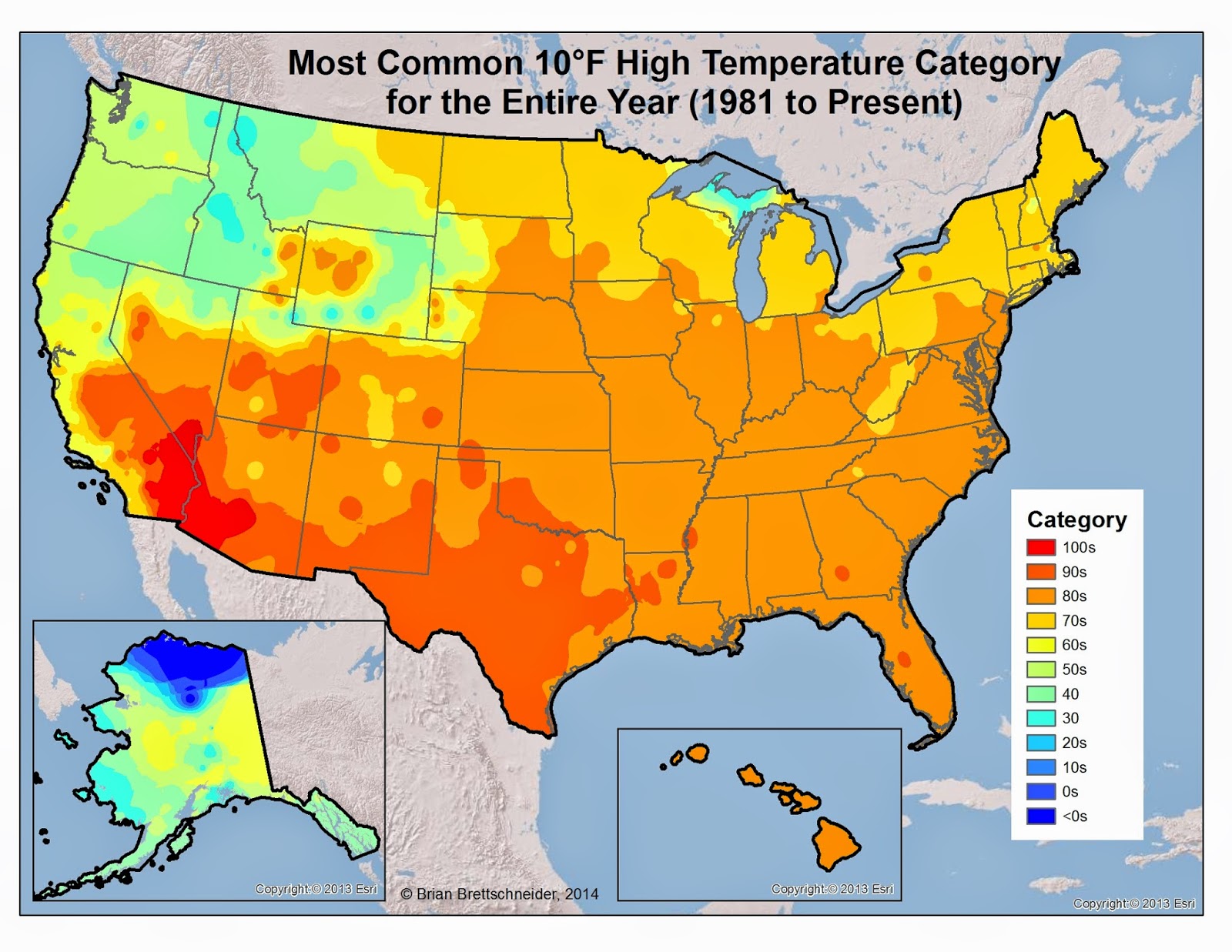Only 3 stations had more days with high temperatures below zero than any other category. No stations had a peak of days with high temperatures in the 0°s or 10°s. Only 1 station (in the entire country!) had more days with high temperatures in the 20°s than any other category. That station was Keystone Ridge, Alaska. Figure 1 shows a sample of high temperature distributions for six stations across Alaska. Figures 2 and 3 are maps that show the spatial distribution of the peak categories.
I calculated the same information and made similar tables and maps for low temperature categories. Those will be the subject of another post.
Figure 3. Map showing the distribution of most frequent 10°F high temperature categories in the U.S..
Figure 1. Table of high temperature distributions for several stations is Alaska. Each station has a peak value in a different category.
Figure 2. Map showing the distribution of most frequent 10°F high temperature categories in Alaska. Note: No stations had peak values in the +0°s or to 10°s but the interpolation algorithm assumes those categories exist. Indeed, they must.



In figure 1, it appears that the three places that are relatively near water have fairly normal distibutions but the three inland places do not. Would this be because of the wide range in Interior temps and because of the moderation of the sea?
ReplyDeleteIs the lack of 0's and 10's because of the lack of northern Alaska weather stations? Or is it really something real?
Eric, the more continental the climate, the more categories there are with substantial values. Some Interior stations have 9 categories with 20 or more days in them. That also means the peak category has fewer values. As opposed to characterizing the coastal stations as normally distributed, I would characterize them as having a low variation. Therefore, a measure of continentality might be to measure the value of the largest category.
DeleteLiving near or surrounded by the ocean can create a boring stable climate. Days of the same temps, winds, humidity, and cloud cover. There are seasonal changes of course, and the occasional storm brings renewed vigor to the winds, clouds, and precipitation.
ReplyDeleteIn Interior Alaska at least we often get a seasonal variety. Anybody recall those mid-winter sold snaps now that we're approaching summer and continuous Civil Twilight?
"During civil twilight the geometric center of the sun is between 0 and 6 degrees below the horizon. Objects are clearly distinguished without artificial light."
http://cleardarksky.com/cgi-bin/RiseSetTable.py?&mn=science&id=FairbanksAK&type=2
Gary
Distinguishable seasons are highly desirable in my opinion. Many people want monotony (e.g., San Diego or Hawaii) but that gets boring after a while.Life is much more interesting when the seasons dictate the way you live your life.
DeleteEspecially here in Fairbanks where the winter can literally kill you. People in Anchorage have it easy (weather-wise not people-wise). But having lived in Phoenix, I would take Fairbanks. (I'm crazy I know).
Delete